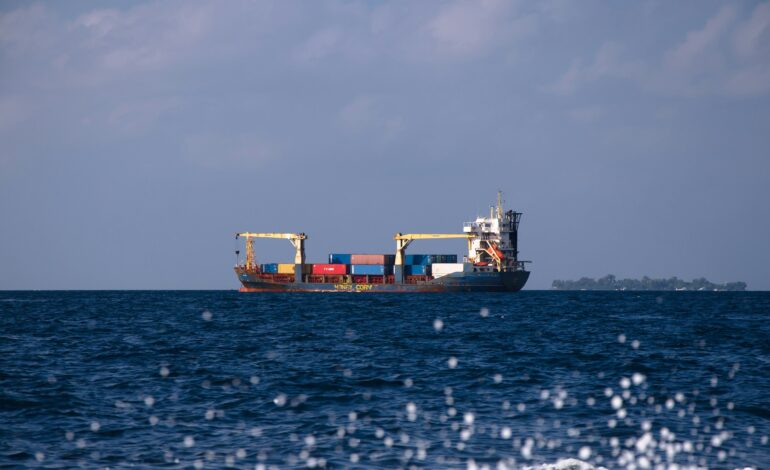
Bunker Fuel Supply Chain Vulnerabilities
In the complex web of global trade and logistics, bunker fuel serves as the lifeblood of maritime transportation, powering ships that move goods across oceans. However, the bunker fuel supply chain is not without vulnerabilities. This article delves into the key vulnerabilities facing the bunker fuel supply chain, the factors contributing to these vulnerabilities, and strategies to enhance resilience in the face of challenges.
Understanding Bunker Fuel Supply Chain
The bunker fuel supply chain encompasses a series of interconnected steps from production and refining to distribution and bunkering at ports. Key stakeholders include oil refineries, fuel suppliers, shipping companies, and port facilities. The primary types of bunker fuel include Heavy Fuel Oil (HFO), Very Low Sulfur Fuel Oil (VLSFO), Marine Gas Oil (MGO), and emerging alternatives like LNG and biofuels.
Key Vulnerabilities
- Geopolitical Instability:
- Sanctions and Trade Restrictions: Political tensions and sanctions on major oil-producing countries disrupt global oil markets, affecting bunker fuel availability and prices.
- Trade Routes: Disruptions or closures of key trade routes (e.g., the Strait of Hormuz) impact the transit of oil and fuel shipments, leading to supply chain delays.
- Market Volatility:
- Price Fluctuations: Bunker fuel prices are susceptible to fluctuations in global oil prices, geopolitical events, and supply-demand imbalances.
- Supply Disruptions: Unexpected disruptions such as natural disasters, accidents, or infrastructure failures at refineries or ports can disrupt fuel supply chains.
- Regulatory Changes:
- Emission Regulations: Stringent environmental regulations, such as IMO sulfur caps, require ships to use lower sulfur fuels (e.g., VLSFO), impacting fuel availability and refining processes.
- Compliance Costs: Meeting regulatory requirements (e.g., installation of scrubbers) adds operational costs and complexity to fuel procurement strategies.
- Infrastructure Limitations:
- Bunkering Facilities: Insufficient or outdated bunkering infrastructure at ports limits the availability of alternative fuels like LNG and biofuels, hindering fuel diversification efforts.
- Logistical Challenges: Limited storage capacity and inadequate transport networks can lead to bottlenecks in fuel distribution, especially during peak demand periods.
- Technological and Operational Risks:
- Fuel Quality: Variability in fuel quality (e.g., stability and compatibility issues) poses risks to ship engines and operational efficiency.
- Cybersecurity: Increasing digitalization introduces cybersecurity threats to critical fuel supply chain infrastructure, necessitating robust cybersecurity measures.
Strategies for Resilience
- Diversification of Fuel Sources:
- Alternative Fuels: Investing in LNG, biofuels, hydrogen, and ammonia reduces reliance on traditional bunker fuels and enhances supply chain flexibility.
- Regional Sourcing: Establishing diverse supply sources and regional partnerships mitigates risks associated with geopolitical instability and trade disruptions.
- Enhanced Collaboration and Transparency:
- Stakeholder Engagement: Collaborating closely with fuel suppliers, shipping companies, and port authorities improves communication and coordination in fuel procurement and distribution.
- Supply Chain Visibility: Utilizing digital technologies (e.g., blockchain, IoT) enhances real-time visibility into fuel supply chains, enabling proactive risk management and response.
- Risk Management and Contingency Planning:
- Scenario Planning: Developing contingency plans for potential disruptions (e.g., alternative bunkering options, emergency fuel reserves) ensures continuity of operations.
- Supply Chain Resilience Testing: Conducting regular risk assessments and simulations identifies vulnerabilities and strengthens supply chain resilience strategies.
- Investment in Infrastructure and Technology:
- Modernized Facilities: Upgrading bunkering infrastructure and storage facilities at ports supports the adoption of alternative fuels and improves operational efficiency.
- Digital Transformation: Adopting advanced analytics, predictive maintenance, and automation enhances operational efficiency and reduces risks in fuel supply management.
- Adaptation to Regulatory Changes:
- Compliance Readiness: Staying informed about evolving environmental regulations and investing in compliance technologies (e.g., scrubbers, emission monitoring systems) ensures regulatory compliance and market competitiveness.
- Advocacy and Industry Engagement: Engaging in industry forums and advocacy efforts to influence regulatory developments and promote feasible compliance pathways.
Conclusion
The bunker fuel supply chain faces multifaceted vulnerabilities, ranging from geopolitical instability and market volatility to regulatory complexities and technological risks. Addressing these challenges requires proactive risk management, investment in alternative fuels and infrastructure, and collaborative efforts across stakeholders. As the maritime industry continues to navigate toward sustainability and resilience, strategic adaptation to evolving global dynamics will be essential in ensuring reliable and environmentally responsible bunker fuel supply chains for future generations.





